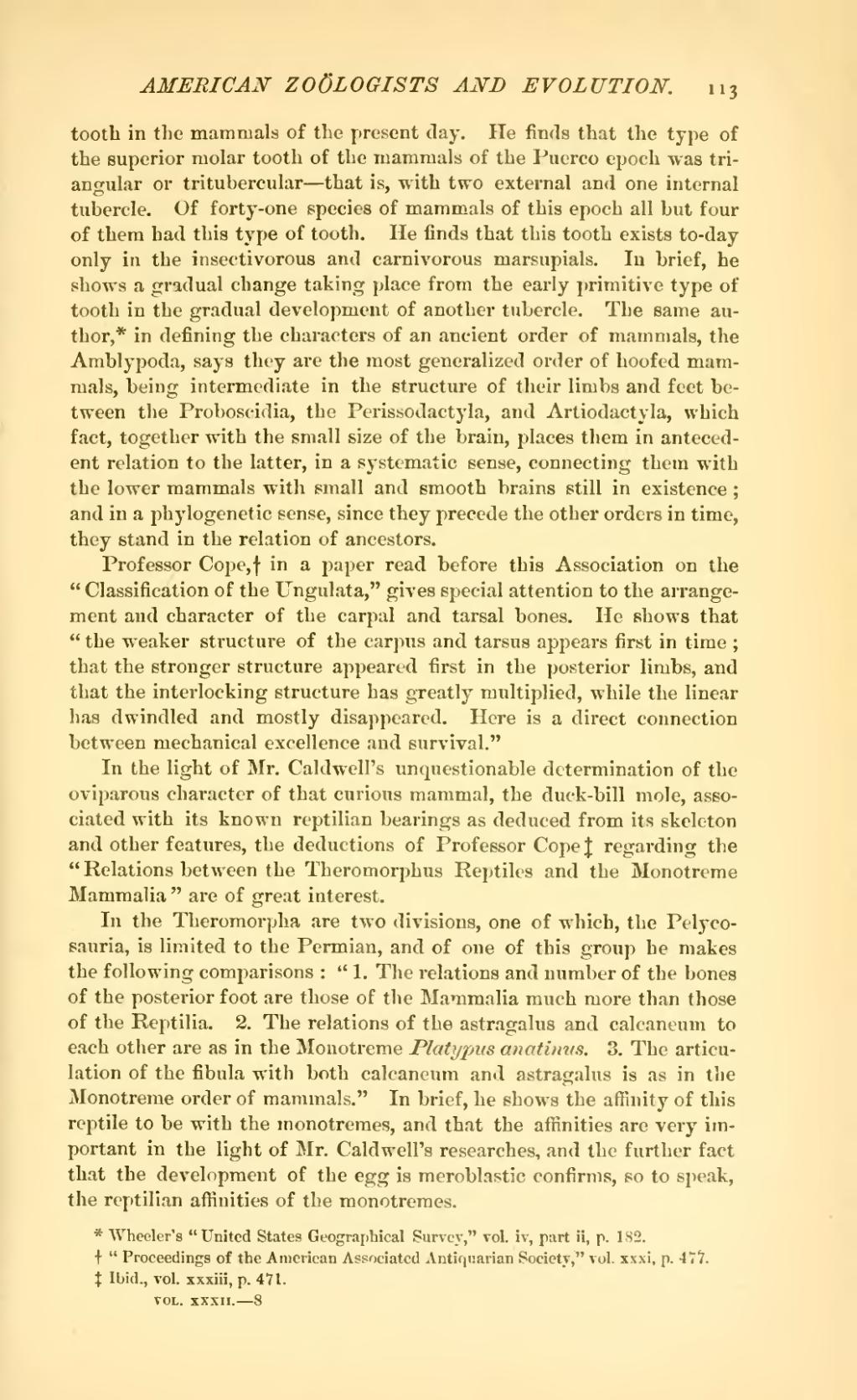tooth in the mammals of the present day. He finds that the type of the superior molar tooth of the mammals of the Puerco epoch was triangular or tritubercular—that is, with two external and one internal tubercle. Of forty-one species of mammals of this epoch all but four of them had this type of tooth. He finds that this tooth exists to-day only in the insectivorous and carnivorous marsupials. In brief, he shows a gradual change taking place from the early primitive type of tooth in the gradual development of another tubercle. The same author,[1] in defining the characters of an ancient order of mammals, the Amblypoda, says they are the most generalized order of hoofed mammals, being intermediate in the structure of their limbs and feet between the Proboscidia, the Perissodactyla, and Artiodactyla, which fact, together with the small size of the brain, places them in antecedent relation to the latter, in a systematic sense, connecting them with the lower mammals with small and smooth brains still in existence; and in a phylogenetic sense, since they precede the other orders in time, they stand in the relation of ancestors.
Professor Cope,[2] in a paper read before this Association on the "Classification of the Ungulata," gives special attention to the arrangement and character of the carpal and tarsal bones. He shows that "the weaker structure of the carpus and tarsus appears first in time; that the stronger structure appeared first in the posterior limbs, and that the interlocking structure has greatly multiplied, while the linear has dwindled and mostly disappeared. Here is a direct connection between mechanical excellence and survival."
In the light of Mr. Caldwell's unquestionable determination of the oviparous character of that curious mammal, the duck-bill mole, associated with its known reptilian bearings as deduced from its skeleton and other features, the deductions of Professor Cope[3] regarding the "Relations between the Theromorphus Reptiles and the Monotreme Mammalia" are of great interest.
In the Theromorpha are two divisions, one of which, the Pelycosauria, is limited to the Permian, and of one of this group he makes the following comparisons: "1. The relations and number of the bones of the posterior foot are those of the Mammalia much more than those of the Reptilia. 2. The relations of the astragalus and calcaneum to each other are as in the Monotreme Platypus anatinus. 3. The articulation of the fibula with both calcaneum and astragalus is as in the Monotreme order of mammals." In brief, he shows the affinity of this reptile to be with the monotremes, and that the affinities are very important in the light of Mr. Caldwell's researches, and the further fact that the development of the egg is meroblastic confirms, so to speak, the reptilian affinities of the monotremes.
